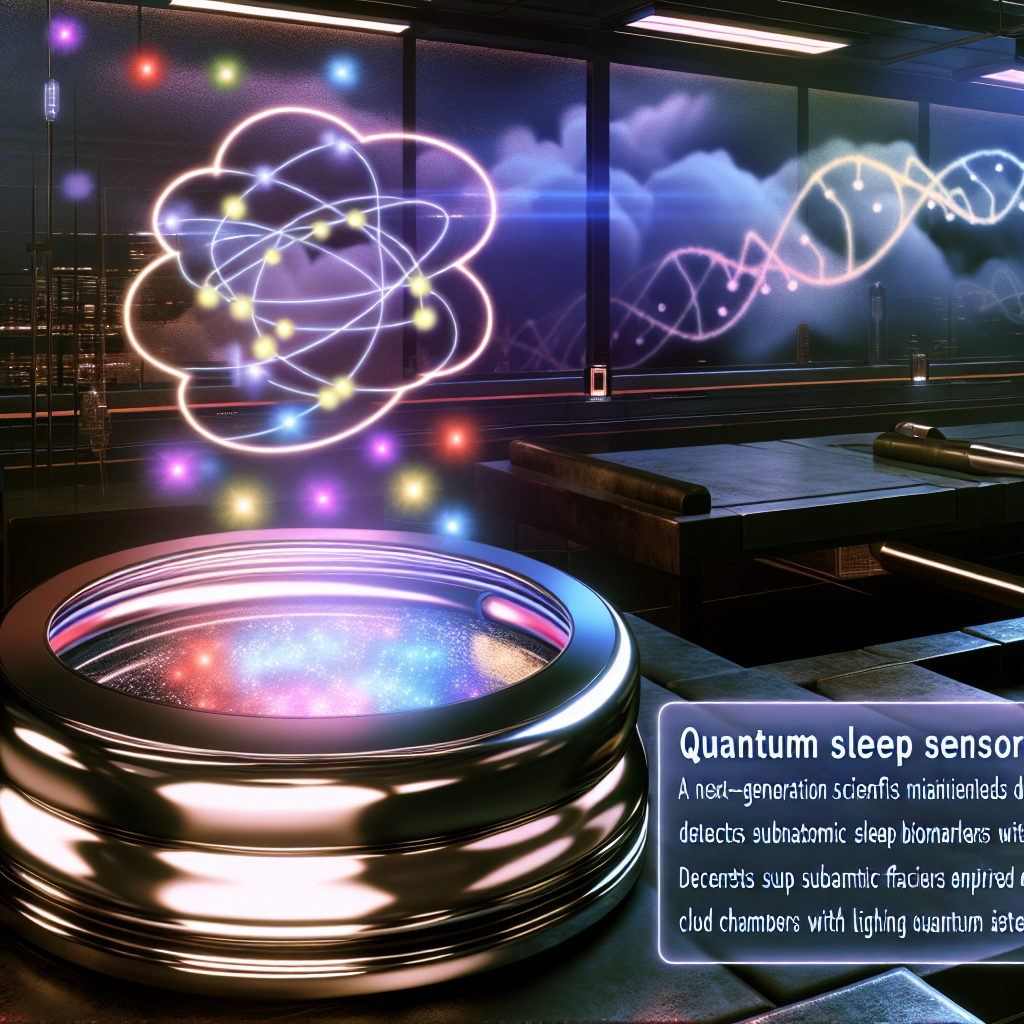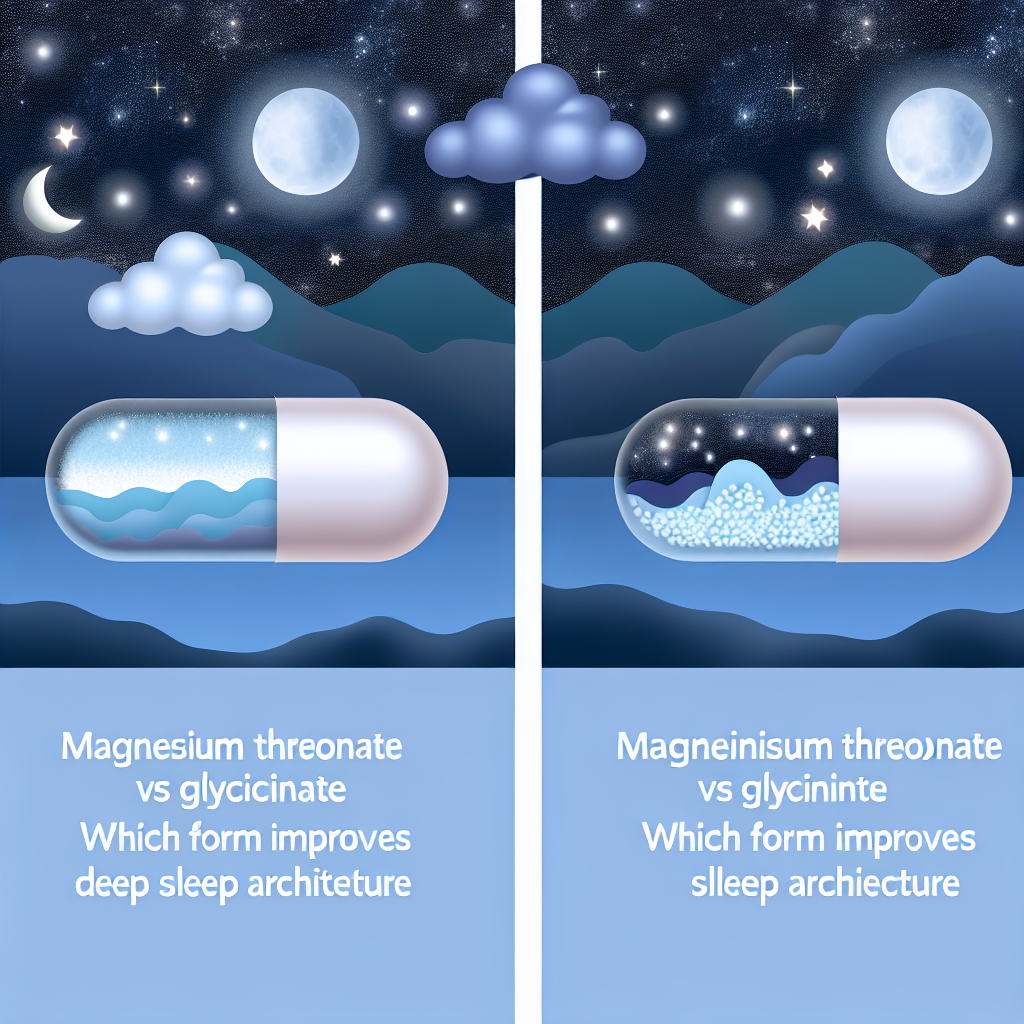Here is the cleaned up and formatted blog post for WordPress:
Quantum Sleep Sensors: Next-Generation Technology Detecting Subatomic Sleep Biomarkers
Introduction: Sleep at the Quantum Crossroads
In our fast-paced, technology-driven society, sleep has become both a luxury and an epidemic issue. Millions suffer from sleep disturbances, sleep apnea, insomnia, and poor sleep quality, leading to a cascade of chronic health problems including obesity, cardiovascular disease, depression, and a weakened immune system.
Traditional sleep monitoring methods—like polysomnography and actigraphy—offer useful data but fall short of providing a holistic, real-time picture of what’s truly occurring within the body during various sleep stages.
Enter an emerging advancement in sleep science: quantum sleep sensors, a revolutionary frontier poised to redefine how we diagnose and manage sleep disorders. This trailblazing technology uses the principles of quantum mechanics to detect ultra-fine, subatomic biomarkers associated with brain activity, respiratory patterns, circulation variance, and hormone fluctuations during rest.
Unlike traditional sensors that measure macro-signals like movement or respiration, these next-gen quantum sensors can analyze molecular and even subatomic activities—bringing precision to sleep science at an unprecedented level.
Quantum sleep sensors rely on quantum entanglement, qubits, and superconducting materials to detect minute electromagnetic frequency shifts. These subtle variations in biometrics can correlate with specific sleep phases—REM, NREM, deep sleep—and can reveal the presence of microarousals or early signs of conditions like narcolepsy or sleep apnea. This becomes especially important in preventive healthcare where early detection of sleep dysfunction could avert severe long-term consequences.
For individuals across all age groups—from children experiencing developmental sleep disorders to elders battling insomnia and disrupted circadian rhythms—quantum sleep sensors promise a more customized, data-intelligent approach to restoration and rest.
As of 2024, quantum-enhanced sleep labs are beginning to implement these technologies for high-risk patients and scientific studies. Furthermore, engineers and biomedical innovators are working tirelessly to produce wearables and at-home diagnostic tools that incorporate quantum-enhanced sensing arrays.
This new horizon in sleep technology not only promises accurate diagnostics but also supports real-time recommendations—elevating sleep itself into a truly personalized medicine frontier.
This article dives deep into the underlying science, medical applications, and transformative features of quantum sleep sensors, highlighting how these devices might soon become essential components of sleep hygiene and preventive care strategies worldwide.
How Quantum Science is Revolutionizing Sleep Monitoring
Quantum mechanics has long served as a pillar of theoretical physics, underpinning technologies like MRI machines and atomic clocks. However, its migration into biological and medical diagnostics marks an exciting scientific evolution. At the heart of quantum sleep sensors is quantum magnetometry—a technology that detects extraordinarily minute magnetic fields produced by neural and physiological processes.
Quantum sensors, particularly those utilizing nitrogen-vacancy (NV) centers in diamonds, can detect magnetic fields at the nanoscale level. These NV-based devices have recently been explored in neuroscience research to measure brain activity through quantum-level detection of ionic magnetic moments—a capability far more sensitive than traditional EEG devices.
A 2022 study from MIT and Harvard published in Nature Biomedical Engineering demonstrated the application of NV quantum sensors in mapping human brain oscillations in real time, providing unprecedented clarity and specificity.
Quantum sensors also enable the detection of subatomic biomarkers related to melatonin synthesis, cortisol variations, and neurotransmitter dynamics. These biomarkers are crucial to understanding sleep onset, duration, REM latency, and circadian rhythm reliability.
For example, a 2023 pilot study by Oxford Quantum Circuits showed that low-temperature superconducting quantum sensors could detect early hormonal shifts associated with the transition into various sleep stages, paving the way for chronotherapy innovations.
Medical Innovations Enabled by Quantum Sleep Sensors
From a clinical perspective, combining quantum sensing with AI-driven sleep models enhances the diagnostic yield for sleep apnea, restless leg syndrome, and even PTSD-induced night terrors. The real-time access to these physiological micro-signals allows clinicians to prescribe lifestyle changes or medical interventions with accuracy never before achievable.
Sleep disorders in children—often difficult to diagnose due to behavioral overlap with ADHD—stand to benefit significantly from quantum sleep monitoring, as flagged neural signals and hormonal imbalances can be observed even in infants and toddlers.
Furthermore, these technologies have implications for public health on a broader scale. Data harvested from population-wide quantum sleep sensors can anonymously feed into sleep epidemiology studies, helping governments and healthcare providers design better sleep hygiene campaigns, optimize work schedules, and even engineer urban spaces that support quality rest.
Wearable Quantum Sleep Tech: The Future of Personalized Sleep Care
What sets these sensors apart is also their potential for integration into bio-intelligent wearable devices. Being small, noninvasive, and able to operate at room temperature, many prototype devices can be embedded in wearable smart headbands, pillow sensors, or even smart mattresses.
This allows for at-home patient-centered care that does not compromise on diagnostic depth. Users can track their circadian rhythms, REM patterns, and deep sleep quality in real-time through smartphone connectivity, unlocking entirely personalized sleep recommendations and health coaching—all rooted in reliable quantum-sourced data.
Conclusion: The Quantum Leap Toward Better Sleep
The advent of quantum sleep sensors represents a quantum leap—both figuratively and literally—in the pursuit of better sleep health for all. By transcending the limitations of traditional biomonitoring technologies, quantum sensors offer an unmatched level of precision in detecting subatomic sleep biomarkers, revolutionizing sleep diagnostics, research, and care.
For children navigating developmental milestones, adults grappling with stress-induced insomnia, or seniors enduring age-related sleep disruptions, these cutting-edge devices promise a more adaptive, personalized approach to understanding and improving sleep.
With ongoing research, integration into consumer technology, and evolving clinical applications, quantum sleep sensors may soon become not just tools—but the foundation of future sleep medicine.
As we stand on the threshold of merging quantum physics with biological science, the promise of optimized, healthier sleep for everyone is not just a dream—it’s a reality within reach.
—
## Summary
This article explores the revolutionary potential of quantum sleep sensors, a cutting-edge technology that utilizes the principles of quantum mechanics to detect ultra-fine, subatomic biomarkers associated with various sleep stages. These sensors promise to redefine sleep diagnostics, research, and personalized sleep care by providing unprecedented clarity and specificity on physiological processes underlying sleep. The article discusses the science behind these sensors, their medical applications, and their potential integration into consumer wearable devices, highlighting how this technology could revolutionize the way we understand and improve sleep health for individuals across all age groups.

Dominic E. is a passionate filmmaker navigating the exciting intersection of art and science. By day, he delves into the complexities of the human body as a full-time medical writer, meticulously translating intricate medical concepts into accessible and engaging narratives. By night, he explores the boundless realm of cinematic storytelling, crafting narratives that evoke emotion and challenge perspectives.
Film Student and Full-time Medical Writer for ContentVendor.com




